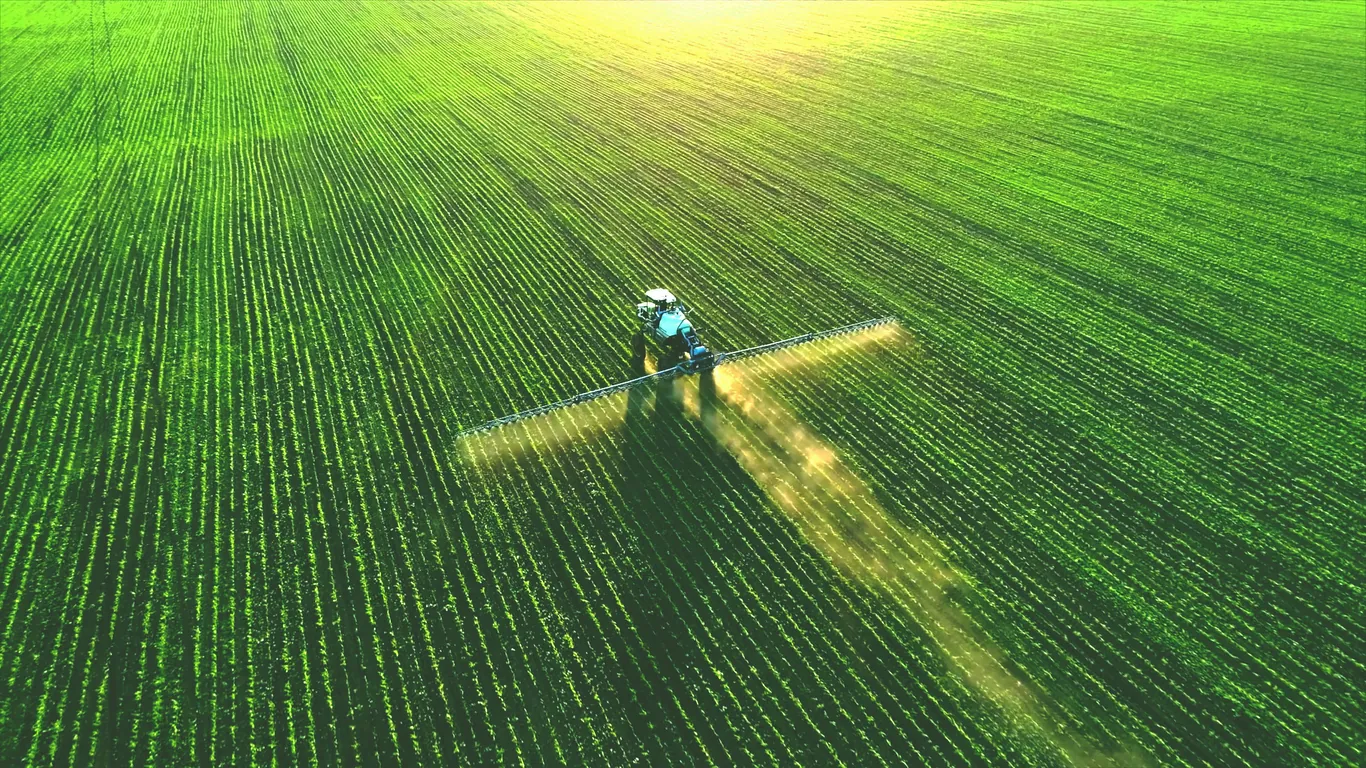Introduction
Agriculture, construction, and mining machinery manufacturing is an industry that is often overlooked but has a significant impact on the global economy. This industry involves the production of machinery and equipment that are essential to the success of many individual businesses and industries.
From tractors and bulldozers to drills and excavators, this sector plays an essential role in shaping our world. In this article, we will take a closer look at what agriculture, construction, and mining machinery manufacturing entails, its importance to the economy and explore its rich history.
Definition of Agriculture, Construction, and Mining Machinery Manufacturing
Agriculture machinery manufacturing involves producing equipment used in farming operations such as planting equipment like seed drills or cultivators. Harvesting equipment such as combine harvesters or balers are also included.
The production of irrigation systems used in watering crops or fertilizers spreaders utilized in nutrient management are equally important parts of this sector. Construction machinery manufacturing comprises the production of machines used in building projects such as bulldozers for land clearing or cranes for heavy lifting duties.
Additionally, there is a wide range of machines such as pavers for road construction or backhoes for digging duties. Mining machinery manufacturing produces equipment utilized in mineral extraction processes from underground mines to open-pit quarries including drills used in blasting rocks or excavators that dig into the earth’s surface.
Importance of the Industry to the Economy
The agriculture, construction, and mining machinery manufacturing industry plays a critical role in economies worldwide by providing essential tools needed by many sectors including construction companies building highways to farmers planting crops. It provides jobs ranging from assembly line workers producing components for these machines to highly-educated engineers designing cutting-edge technology used within them.
The financial impact extends beyond employment opportunities; it includes sales generated through distribution channels like local dealerships where customers can buy these expensive pieces of equipment. The industry also contributes to the gross domestic product (GDP) with every machine sold and serviced.
Overview of the History of the Industry
The history of agriculture, construction, and mining machinery manufacturing traces back to the industrial revolution when steam engines were developed in the early 18th century. They replaced traditional manual labor with machinery-powered tools that could perform tasks faster and more efficiently than humans. As these machines evolved, they became more complex and specialized for specific industries like farming or mining.
In recent times, technological advancements have had a significant impact on this industry’s development in areas such as automation, precision farming technology or digital tools for construction management. With continued innovation, it is exciting to see how this sector will shape our societies in the future.
Agriculture Machinery Manufacturing
Types of machinery manufactured for agriculture
The agriculture machinery manufacturing industry is responsible for producing a wide variety of machinery that is specifically designed for use on farms. Some of the most common types of machinery that are manufactured for agriculture include tractors and other farm vehicles, harvesting equipment, irrigation systems, fertilizer spreaders and sprayers, and planting equipment.
Tractors and Other Farm Vehicles
Tractors are undoubtedly one of the most important pieces of equipment used in modern farming. They come in a wide variety of sizes and can be equipped with a range of different implements to perform tasks such as plowing fields, planting crops, tilling or cultivating soil, or hauling heavy loads. Other common farm vehicles include combine harvesters, which are used to harvest grains like wheat or corn by cutting the stalks down low and separating the grain from the chaff.
Harvesting Equipment
Aside from combine harvesters specifically designed to handle grains like wheat or corn, there are also other harvesting machines built to handle different crops. For example, potatoes require specialized machinery such as potato diggers that can remove them from underground without damaging them. There are also specialized machines for grapes (grape pickers), nuts (nut harvesters), berries (berry pickers), and more.
Irrigation Systems
Irrigation systems play an important role in modern farming practices by helping farmers conserve water while still providing adequate moisture to their crops. The irrigation equipment manufactured includes everything from simple garden hoses to complex drip irrigation systems.
Fertilizer Spreaders and Sprayers
Fertilizer spreaders and sprayers help farmers apply nutrients directly to their crops at precisely the right time in their growth cycles. These machines generally work by either spreading granulated fertilizers over a field or by spraying liquid or powdered fertilizers directly onto the plants themselves.
Planting Equipment
Planting equipment helps farmers plant crops more efficiently and accurately. This includes everything from simple handheld seeders to complex machines that can plant acres of land in a single day.
Technological advancements in agriculture machinery manufacturing
The agriculture machinery manufacturing industry has seen significant advances in technology over the last few decades. This includes the development of precision farming technology, which allows farmers to use GPS-guided systems to optimize planting and harvesting operations. Autonomous tractors and drones are also being developed, which have the potential to revolutionize farming by automating many of the tedious tasks associated with planting and harvesting crops.
Precision Farming Technology
Precision farming technology is enabled through a combination of GPS mapping, sensors, and data analysis software. Farmers can use this technology to optimize their operations by more carefully monitoring soil moisture levels, tracking crop growth rates, analyzing weather patterns, and more. Ultimately it allows farmers to make better decisions about when and where to plant their crops, how much fertilizer or water to apply at various stages in the growing cycle, etc.
Autonomous Tractors and Drones
Autonomous tractors are designed to operate without human drivers once they have been programmed with a route or task list. Drones can be used for crop monitoring purposes such as spray application or creating maps for yield optimization through targeted input applications based on areas differing from each other due soil variation or other reasons
Future trends in agriculture machinery manufacturing
The future looks bright for the agriculture machinery manufacturing industry as new innovations emerge that promise greater efficiency and sustainability for farmers around the world. One trend that is expected to gain momentum is the development of electric farm equipment that reduces emissions while still delivering high power output. Other trends include increased use of artificial intelligence in farming operations, the use of blockchain technology for supply chain management, and more.
Construction Machinery Manufacturing
Types of Machinery Manufactured for Construction
Construction machinery manufacturing involves producing a range of heavy equipment used in construction projects. These machines are designed to carry out specific tasks, such as excavating, grading, paving, and lifting heavy loads. The most commonly manufactured construction machinery includes excavators, bulldozers, loaders, cranes, pavers, backhoes and compactors.
Excavators are large machines that use a bucket or hydraulic claw to dig into the ground or remove debris from a site. Bulldozers are used for grading and leveling large areas of land.
Loaders are used to move materials around the job site or load them into trucks for transportation. Cranes are used for lifting heavy objects such as steel beams or prefabricated building sections into place on high-rise buildings or other structures.
Pavers are used to lay asphalt or concrete on roads and other surfaces while backhoes are versatile machines capable of digging trenches or holes and moving soil. Compactors come in various sizes and shapes but they are predominantly known for their ability to compress materials like soil so that they can be transported easily.
Technological Advancements in Construction Machinery Manufacturing
In recent years there have been significant advancements in the manufacturing of construction machinery related to technology. These advancements have focused on making machinery more efficient by reducing fuel consumption while increasing power output at the same time.
Digital tools for construction management have made it easier than ever before for workers on job sites to communicate with one another quickly as well as monitor progress more efficiently. Deploying these digital tools makes it possible to track costs throughout project lifecycles using programs like Building Information Modelling (BIM) which provides 3D models of structures being developed.
Smart machines with artificial intelligence (AI) add an extra layer of automation when it comes to managing large-scale construction projects. AI algorithms can take into account factors like weather forecasts and project timelines to help optimize construction schedules and boost productivity.
Future Trends in Construction Machinery Manufacturing
Looking ahead, the trend in construction machinery manufacturing is likely to continue toward greater automation, machine learning (ML), and artificial intelligence (AI). This will include the development of more autonomous machines that can carry out tasks with minimal human input. Other emerging trends in construction machinery manufacturing include the use of augmented reality (AR) technology.
AR allows workers to visualize building models on-site before they’re even built; this is especially useful for teams involved in complex projects where visualization of a final product is critical. In addition to AR, there’s also a growing interest in 3D printing as it relates to manufacturing of equipment parts.
As 3D printing becomes more accessible and affordable, manufacturers will be able to produce parts faster and more cheaply than ever before. The future of construction machinery manufacturing looks bright, with plenty of exciting developments on the horizon.
Mining Machinery Manufacturing
Types of Machinery
Mining machinery manufacturing is one of the most important industries in the world. The sector includes a wide range of equipment, from underground mining vehicles to surface mining machines.
Some of the different types of mining machinery that are manufactured include:
- Excavators and shovels for digging and removing earth and minerals
- Drills for creating holes in rock surfaces for explosives or water infusion.
- Blasters for breaking up rocks, tunnels, and other materials
- Crushing machines that break down large chunks of rock into smaller pieces to be processed further
- Conveyors that move materials from mines to processing facilities or storage areas
The Future of Mining Machinery Manufacturing
As with agriculture and construction equipment manufacturing, there are several trends emerging in the mining machinery manufacturing sector as well. One significant trend is a focus on automation, which has been found to reduce costs while increasing productivity. There is also an increased emphasis on safety with new technologies being developed aimed at reducing workplace injuries.
Conclusion
The agriculture, construction, and mining machinery manufacturing industry plays a crucial role in our economy by supplying essential equipment needed for various sectors such as farming, transportation infrastructure development and mineral extraction. With rapid technological advancements like autonomous vehicles and digital tools coming to the forefront in these industries, it’s exciting to see what future developments will arise. While industry-wide challenges remain such as environmental concerns around emissions generated by heavy-duty machines used in these sectors; continued innovating can lead us towards more sustainable practices which can benefit humans as well as nature.
Overall there’s strong optimism about what lays ahead those who are part of this industry. It is exciting and fascinating to see how these machines evolve to keep pace with our growing needs for food, infrastructure, and natural resources while also prioritizing safety, efficiency, and sustainability.



